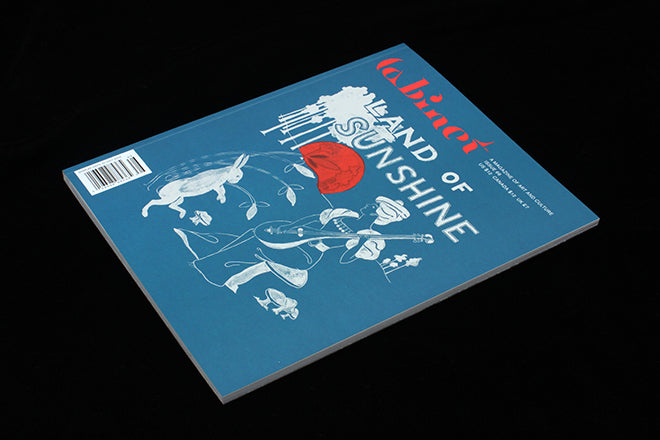
Cabinet #66
After two years, Cabinet is back with a printed issue. I spoke to founder and editor-in-chief Sina Najafi about the past, present and future of the magazine.
‘We announced in 2018 that we would do three more print editions then switch to being a digital monthly,’ Najafi explained, ‘We thought this process would be completed in 2019, but actually last year was completely absorbed with all the changes we had to make to be ready for the transition, so we published only one issue, out now. We are about to send the next issue to press; it has a theme section on Dreams. And then issue 68, which will have a theme section on The End.’

The first of these final issues is unthemed – though arguably the absence of a theme is a theme in itself. It’s the first of its kind since the magazine launched and as Najafi says in his editor’s letter (above), almost a trial run for when the mag goes digital and fully themeless. And while the idiosyncratic structure of the magazine has resulted in an issue that’s not hugely unlike previous iterations, there are a few notable differences.
For those unfamiliar with Cabinet, its coverage of art and culture has always been split across three sections each issue.
The first, ‘Columns’ features pieces in a rotation of regular titles, a few of which are: “Inventory” (creative reassessments of various types of catalogues, lists, and taxonomies), “Ingestion” (examining the intersections between eating, aesthetics, and philosophy) and “Colors” (a wide variety of writers ranging from scientists to poets and many others in between consider a specific color assigned to them).

Most significantly, “Colors” is not present in issue 66, though a satisfying catalogue of hand drawn objects from public libraries makes up the contents of “Inventory” by Laurel Rogers – think filing cabinets and “perfect inkstands” (above). I’m also delighted to see the latest line from Brian Dillon’s “Sentences” in Columns: ‘Paper storage, fragments of delirium eaten away by dust,’ (below). Dillon examines a sentence in such minute detail that often the line becomes embossed in your own brain – in fact I still remember Hillary Mantel’s ‘...long feet like blades carving through the rain’ from issue 65.

The third section that is usually dedicated to the theme is smaller than usual, simply titled “And”, meaning that the major body of this issue is found in the second section, “Main”. As ever, this features a quirky selection of material: “Singing Disappearance” by Adam Bobbette is about ‘Javanese songbird competitions and the ventriloquizing of extinction,’ (below), while “The Non Boundary” by Justin E. H. Smith opens with the line – ‘A thought experiment: what would our metaphysics look like if nature or the creator had endowed us with exoskeletons?’. It’s classic Cabinet: gently fastidious, consistently thought-provoking, occasionally dark and surprisingly playful.

So what will happen after “The End”? Najafi: ‘The magazine will be a monthly, with two unthemed issues followed by a fully themed issue. It’ll be more or less like the magazine as it is now, but broken up over three issues. We have also launched an online platform called Kiosk, where we’ll publish essays that are more timely and that we can edit quickly.
‘The goal is to have three rhythms of publishing: a relatively quick tempo with Kiosk articles, a slower temp with Cabinet issues, where the essays, which can be much longer, are not going to suffer from being published six months after we first receive them (so, for example, historical material would end up in the magazine); and then the books.’
‘The first book in the para-philosophy series is by Aaron Schuster and is a short book that builds on a very interesting essay he did for the magazine on tickling and philosophy. Tickling has always posed a problem for philosophy, in part because you cannot tickle yourself and you can also start laughing at the very idea of being tickled, to mention two interesting parts of the phenomenon. And tickling has been discussed by tons of philosophers, inc. Plato, Aristotle, Descartes, Spinoza, Nietzsche, Freud, Derrida, and Lacan. So the book will look at this apparently trifling topic as a way of understanding how we have framed the idea of pleasure and how it can at times turn into something excruciating.’
Even if it won’t be in print, I’m glad to see Cabinet continuing to do what it does best. The magazine has always served as a refuge from stuffy academia, casting a magnifying glass over the overlooked or obscure. It’s exciting too that whole books will emerge from past Cabinet articles – proof that magazines are still very much the launchpad for new writers, artists, and ideas.
Buy your copy from the magCulture Shop


